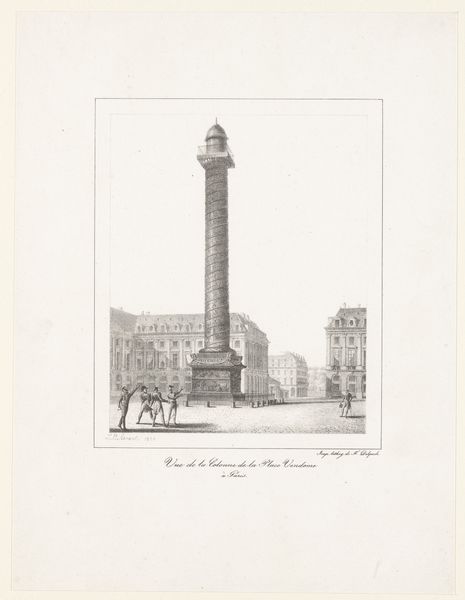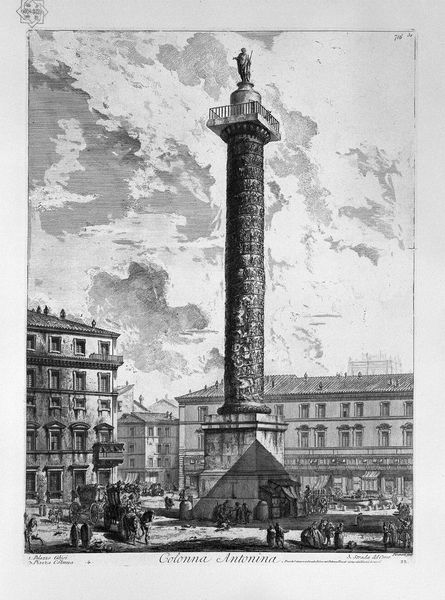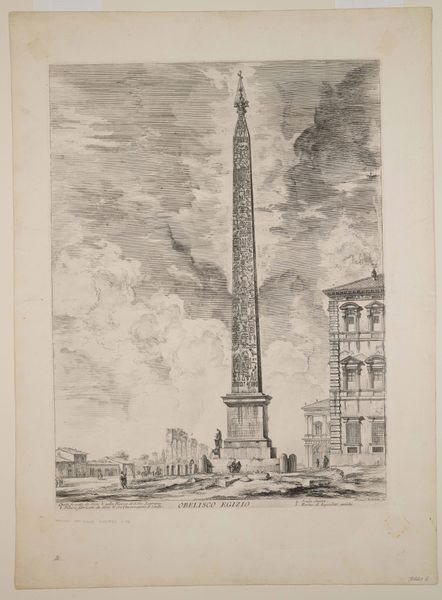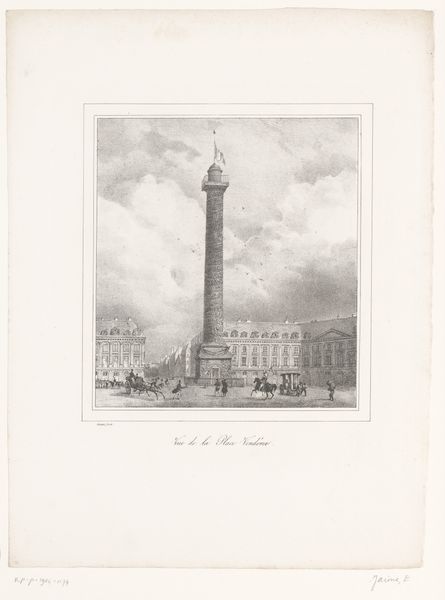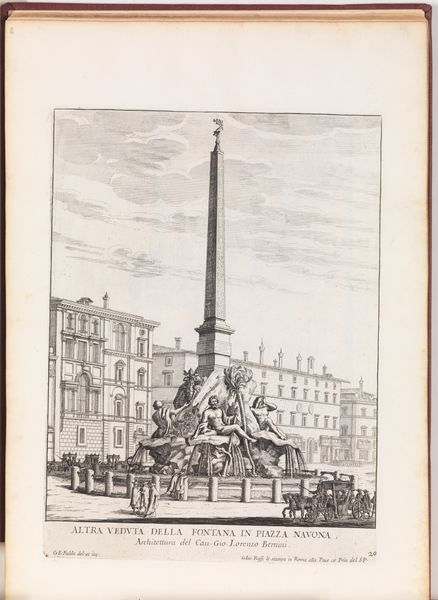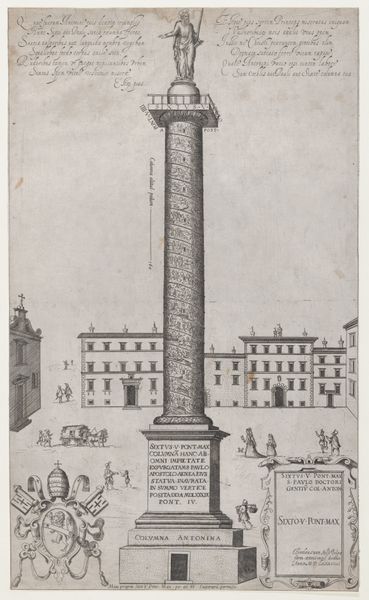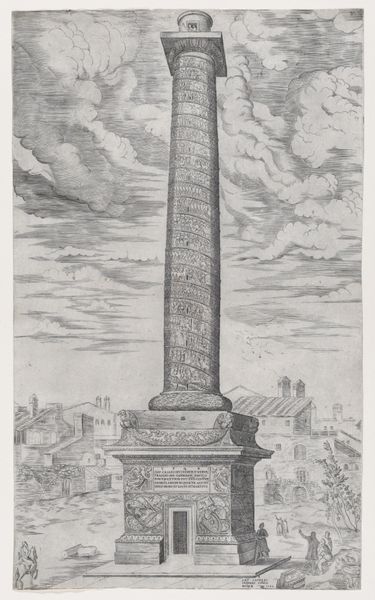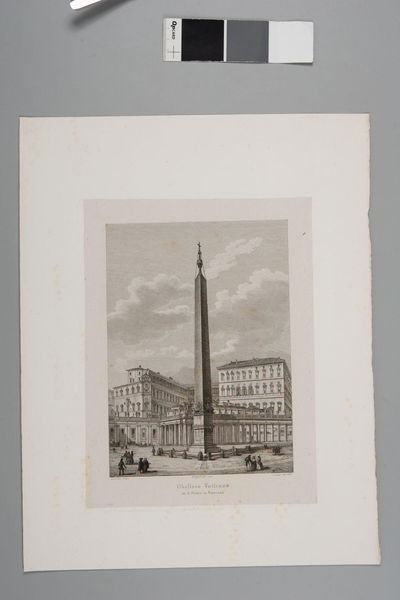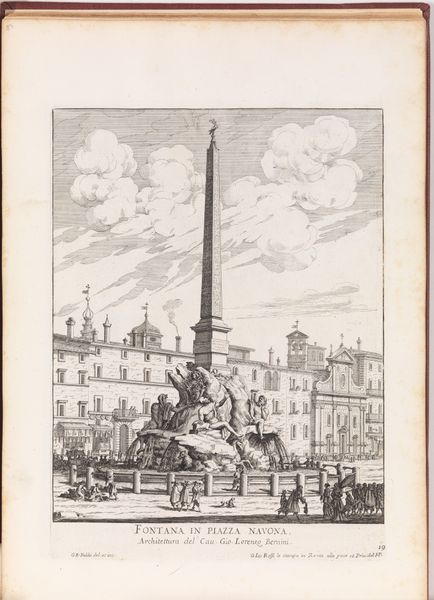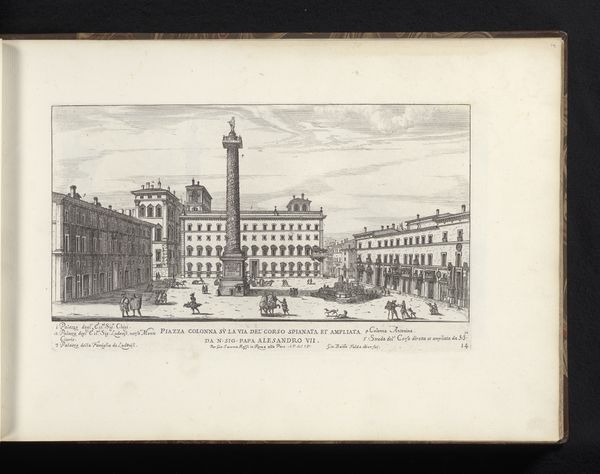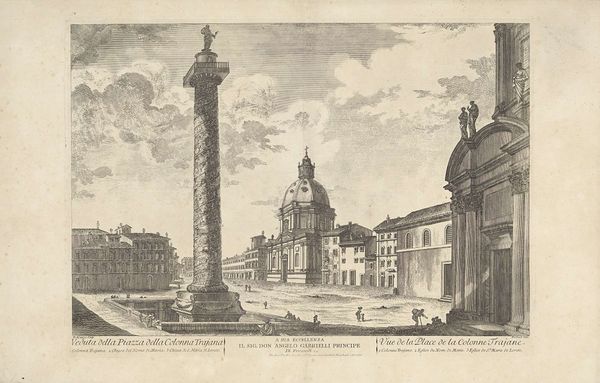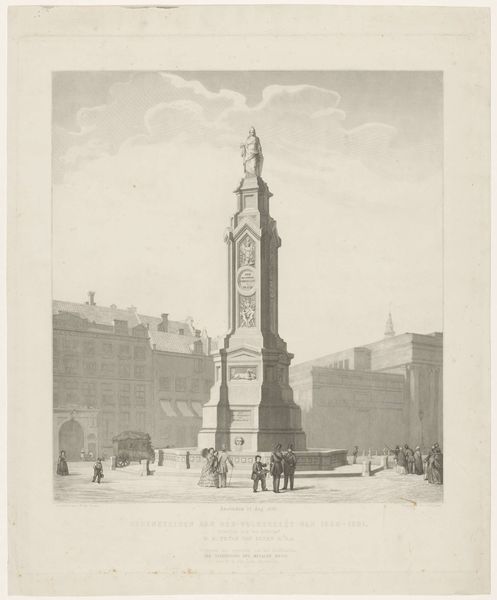
Colonna Antonina (Column of Marcus Aurelius) 1758
0:00
0:00
print, etching
# print
#
etching
#
landscape
#
etching
#
romanesque
#
line
#
cityscape
#
history-painting
Dimensions: 21 1/2 x 15 7/8 in. (54.61 x 40.32 cm) (plate)
Copyright: Public Domain
Editor: This is Giovanni Battista Piranesi's etching, "Colonna Antonina," created in 1758. The incredible height of the column against the relatively shorter buildings is quite striking, and there's so much detailed activity at the base. How do you interpret this work? Curator: The Colonna Antonina, a symbol of Roman imperial power, dominates the cityscape—and Piranesi masterfully emphasizes this, doesn't he? But consider, too, what such columns meant to those living in their shadows. They represented not only glory, but conquest, rule, an imposition of cultural values, etched in stone for eternity. Notice the continuous spiral frieze. What do you suppose it signifies by circling ever upwards? Editor: Perhaps the emperor’s endless triumphs, an eternal record. The spiraling upwards gives me the sense of always reaching, never ceasing. Curator: Precisely. And what is power if not the attempt to transcend the mundane, the mortal coil? That continuous, winding narrative serves to deify Marcus Aurelius. It imprints his victories on the very consciousness of the city, shaping its cultural memory. How do you think people viewed the sculptures atop the column itself? Editor: Probably with awe and reverence… a representation of the divine almost. It's fascinating to consider how visual symbols can mold perceptions and collective memories. Curator: Exactly. Even today, the image of this column evokes a powerful emotional response linked to our understanding of historical narratives, of human ambition, of empires rising and, inevitably, falling. What lasting effect do you think it had, or continues to have? Editor: It makes you think about how we choose to remember our leaders and our histories— the visual language that persists through centuries is really impactful. Curator: Indeed, and Piranesi's etching, by preserving and propagating this image, participates in that ongoing dialogue with the past. A testament to how potent imagery can be, generation after generation.
Comments
No comments
Be the first to comment and join the conversation on the ultimate creative platform.
